What You Need to Know About Coaching Employees
You don’t have to be a full-time or certified coach in order to coach employees or coworkers. But there are some assumptions and misunderstandings that may prevent people from coaching employees or their coworkers. The first is an incorrect or partial definition of coaching. Coaching can easily be confused with mentoring or advising. The second is that people assume coaching skills can only applied in formal one-on-one settings. The third is the assumption that you need a formal certificate or degree to practice good coworker or employee coaching. The good news is that formal, one-on-one executive coaching isn’t the only way to make an impact. You can learn and apply effective coaching skills in various workplace settings.
There are a few key coaching skills that also serve as the building blocks of powerful and meaningful human interaction. Anyone in an organization can use these effective coaching skills to add value in meaningful ways, including to:
- coach employees
- engage in a coaching conversation with a colleague or your team
- drive employee development or performance improvement
- perform leadership coaching with rising talent or your team
- provide career coaching to an employee or support career development
- compliment professional development or employee training
- support organizational change
- address a team performance issue or an underperforming employee
- boost team or employee morale
- provide constructive feedback or effective mentoring
- or simply help people get unstuck and achieve a breakthrough in their work
In this article, I’ll answer 5 questions about coaching employees and coworkers. These responses will help you create a vision for workplace coaching so that you can get started with successful coaching conversations right away.
- What Does Coaching Employees or Coworkers at Work Look Like?
- Why is Coaching Employees and Coworkers Important?
- Where does Coaching Happen at Work?
- When does Peer-to-Peer or Employee Coaching Happen at Work?
- Who can be a Workplace Coach?
Before we dive into the 5 questions, let’s define coaching and what happens in productive coaching conversations. According to the International Coaching Federation, successful coaching is defined “as partnering with clients in a thought-provoking and creative process that inspires them to maximize their personal and professional potential.” Let’s break this down.
“partnering with clients…”
Partnering means that both people chose to get into a coaching relationship with defined roles. Like partners, each person has their responsibilities and these are clearly defined up front. During productive coaching conversations, coaches are there to listen, ask questions, push back, and provide feedback. They are not there to give the client the answers. The client is there to decide what they want and execute the plan to get what they want. When you stick to your roles in coaching sessions, the results can be massive!
Partnering also implies that both people want to be in this coaching relationship.
One of the MOST important assumptions of executive coaching is that the client is coachable. The coaching process will not work if the client is not ready and willing to be coached. I have ended client relationships when it was clear they were not ready or willing to be coached.
I have made the mistake of staying with clients that did not meet this requirement and those coaching sessions did not end well.
Sometimes we run into these situations when we are a little too good at convincing or selling someone on coaching. I have made this mistake! I got quite enthusiastic and the prospect would get excited as a result and say “yes!” Those coaching sessions wouldn’t result in much progress for the client.
Remember, partnership implies both people want and choose to be in the coaching relationship.
“thought provoking and creative process…”
Great coaching is all about challenging how our client thinks and extracting new and innovative ideas. Coaching sessions can be like brainstorming sessions led by a coach. The most powerful question a coach uses to extract more ideas from a client is “what else?” When a client has shared the 3 ideas off the top of their head, an effective coach asks, what else? The coach waits patiently. Chances are, the client hasn’t been pushed to come up with a fourth option up until this point. After some thinking, the client comes up with an idea. Then they ask, “what else?” Now the client thinks you’re crazy because they just gave you 4 brilliant ideas. They think, “what more could she want?!”
A good coach waits patiently for the client to come up with a fifth idea. Then they ask, “what else?” By now your client has warmed up their creative engines and the next 2 or 3 ideas will flow more easily.
The innovative ideas are usually the ones that come after the first 4 or 5 ideas. Let’s face it, if the first 3 ideas were that great, would your client need a coaching conversation with you?
This isn’t too different from what personal fitness trainers do. First they say, “give me 10 pushups.” You think that doesn’t sound too bad. Then they say, “on second thought, while you’re down there, give me 3 more.” You think, this guy is crazy! But you do it anyway. Then your trainer says, “let’s make it an even 15.” You’re thinking that 15 isn’t an even number but before you know it, you realize you just improved by 50%!
An effective coach is no different. They are there to extract those extra 5 or 7 ideas from you in order to help you improve your performance.
Lastly, the word “process” in the definition implies that there is a coaching process or coaching model which separates a coaching conversation or coaching relationship from a friendly one.
“…maximize their personal and professional potential.”
The other MOST important assumption of coaching is that the client has it within them to solve their own problems and achieve what they want. The potential is there, and it is a coach’s job to maximize it! There is nothing more important than this assumption because without it, you can’t have successful coaching conversations.
Again, we are there to maximize the potential that already exists within our client. When we push them in coaching sessions, it is because we believe they are capable of achieving their goal!
What does coaching employees or coworkers at work look like?
When people think of coaching at work, they usually think of executive coaching, for executives only. However, coaching at work is not necessarily the same as a formal, 1-on-1 coaching engagement with someone you hired.
For formal, 1-on-1, coaching sessions to stand the best chance of success, it must be fully objective. That means, coaches should not be a friend, colleague, manager, or anyone with any interest in your work/performance or with a conflict of interest. For instance, it’s hard to be objective and for your client to consider you objective, when their success depends on your success. This is the case with managers, parents, spouses, etc. As the client I would have to wonder if you are suggesting something or nudging me in a certain direction because it suits your interests. As the coach, it’s difficult to remain calm if you don’t see the performance you expect/need.
Perhaps a less conflicted relationship might be one where your friend is your coach. Coaching friends is challenging because there is already a behavior dynamic between the two people that will be hard to break. As the friend of a client, I might make assumptions about their responses or reactions based on history with them. Those assumptions will influence my performance in the coaching session.
So what does that mean? It simply means that when you hire a coach, hire someone you don’t know who only has one interest – the success you desire. That is, it doesn’t matter to them what you pursue so long as it is what you want. Their mission is to help you get what you want.
Ok, now, let’s look at a few ways coaching at work happens.
Manager as a Coach
In this scenario, your manager will draw on effective employee coaching skills when working with you or your team. This might occur in weekly 1-on-1s, team meetings, and a variety of other settings depending on the nature of the work. The manager will leverage coaching principles to do the following:
- empower their team (rather than simply give them all of the answers/commands),
- drive engagement (rather than mandating it),
- embrace productive failure (rather than punishing it),
- create a culture of growth mindset (which assumes your people can learn anything they choose to learn),
- motivate and inspire their people to maximize performance potential
Lastly, manager-as-a-coach can also resemble formal 1-on-1 coaching when the manager asks for permission to intentionally remove their “manager hat” and put on their “coach hat.” Keeping the coaching hat on is difficult to do for extended periods of time. This is why I always suggest reserving it for those select “coaching moments.”
Internal Coaching
In this scenario, which is still uncommon, the company has committed to hiring full-time internal coaches. These coaches are likely to be formally trained 1-on-1 coaches and thus will be prepared and equipped to work with you in a more traditional format. However, whereas in an external coaching engagement you have likely purchased a 3-, 6-, or 12-month coaching contract, with internal coaching it will likely be on an “as-needed” basis or some capped number of sessions. These internal coaches may also be reserved exclusively for managers and executives.
Their separation from your team allowed them to be more objective. However, they still work for your company, so it is their job to help drive better performance from their internal clients. How that is measured will depend on the company as this is not yet a common practice across most companies.
Peer Coaching
In this scenario, people are empowered, encouraged, and sometimes trained to serve as peer-to-peer coaches in the company. A great example of this is IBM, a company of over 300,000 people, where they have an internal coach certification that IBMers can earn after engaging in a 3 month coaching program. With this internal certificate, IBMers are encouraged to seek out coaching engagements with their colleagues, preferably those outside of their teams or organizations.
When you know someone’s line of work quite well, it’s easy to skip a lot of questions a more objective coach would ask. Unfortunately, you would miss many potential opportunities for extracting more clarity and ideas from those very questions.
Peer coaching can also occur with teammates, but much like managers, it is an opportunity to draw on the skills and strategies of coaches in order to serve your team at a higher level, rather than engaging in formal 1-on-1 engagements. That said, every now and then, you can ask your teammates if it’s ok for you to put on your “coaching hat.”
Why is coaching employees important?
Here are a few not-so-fun stats about the workplace these days…although the last one is a bright spot.
- A study by Zenefits, an HR and payroll SaaS provider, found that 63% of companies (between 5-500 employees) report that retaining employees is harder than hiring them.
- According to FastTrack 360, 71% of executives say employee engagement is critical to their success.
- A Gallup study shows that 85% of employees are not engaged at work.
- According to another Gallup study, companies with a highly engaged workforce are 21% more profitable.
Coaching is a significant investment in employees. While access to online courses can help with narrow and specific skill gaps, coaching is an opportunity to help drive overall improved employee performance and employee retention.
Think of our individual skills as our “apps.” When L&D offers courses and workshops, these are the equivalent of new apps or existing app feature upgrades.
Coaching is an opportunity to upgrade the operating system that houses all of our skill apps. Without a powerful, effective, and efficient OS, skill apps crash frequently and do work to their fullest potential.
When you upgrade people’s operating systems, it impacts everything they do.
In a coaching culture, employee engagement flows vertically and horizontally.
Internal coaching upgrades your managers and leaders, and subsequently, positions them to help serve their employees at a higher level. And if they are provided with some coach training and practice, they can become Manager-as-a-Coach.
Peer-to-peer coaching empowers your people, managers and non-managers alike, to serve each other at a higher level by equipping them with the skills to serve each other.
Now, if you think about this flow of support for a moment. Managers being served by internal coaches at no personal cost (a nice benefit with better ROI than free swag). Managers serving that value to their employees in the form of effective and empowering leadership. Add some internal coach training and now managers can even borrow coaching strategies to serve their people at a higher level. Lastly, extend the internal coach training to all employees, and they are constantly giving and receiving value from each other.
True engagement occurs when everyone is serving each other in effective and skilled ways that drive measurable results to loyalty, retention, engagement, and profitability.
A coaching culture brings people together in a more meaningful way that provides significant rewards for all involved.
Where can coaching employees or coworkers happen?
Coaching at work can happen almost anywhere. Let’s go over a few places where it can occur.
Team/Group Meetings
This is one of my favorite places for applying coaching skills. One of the goals of coaching is to help your client identify a clearly-defined, specific, and measurable goal or result. I can think of no place that needs this more than meetings! While not all are the same, I think most can agree that we regularly attend meetings that lack clarity of purpose, focus, and tangible results. This is where coaches flex their muscles! Equipped with coaching skills and strategies, employees can ask the types of powerful questions that challenge the meeting to become more clear and focused.
For instance, one of my favorite coaching questions to ask at a meeting is, “let’s say we agree to do [something], what happens as a result?” Or “what are we looking to drive with this project? What do we want to happen as a result of this starting this new project?” “If this project or initiative is a success, what is the impact that will make on our larger organizational goals?”
Coaching questions like that help the group to shift their focus to strategic purpose, alignment, and results. Sometimes, it’s easy to fall in love with what sounds like an interesting and exciting project or initiative. However, if it doesn’t get us closer to our bigger targets or worse yet, if it distracts us from them, we should not pursue the project. Coaching questions that allow the group the opportunity to zoom out for a moment create a powerful perspective.
1-on-1 meetings b/w manager and employee
In these sessions, managers have an opportunity to leverage fundamental skills of coaching (i.e. active listening, powerful questions, building clarity, etc.). Since managers must still play their official role, do not expect a manager to play a full coaching role. However, managers can put on their “coaching hat” from time to time in the conversation, with permission from their employee. This will create additional value from the time invested for this conversation. And when the coaching hat is not on, managers can listen actively and ask powerful questions. With just a few fundamental coaching skills, managers and employees can enjoy significantly upgraded one-on-one meetings.
Slack channels (or internal messaging channels)
If your company uses this collaboration tool, Slack channels are an interesting place where conversations can get distracted very easily. Powerful coaching questions can help get a Slack conversation back on track in order to deliver maximum value for everyone. Furthermore, active listening also applies to reading what people say. Read carefully, capture the facts, and note the sentiments in writing. This will help you respond more thoughtfully.
Meeting between colleagues
These meetings can also be great places to apply the power of coaching skills. Whether this is a meeting to support a colleague, discuss a problem, or explore opportunities, active listening and powerful questions can significantly upgrade the experience and ROI of these meetings.
When does employee coaching happen?
The more formal you get, the less often.
When sessions are more formal, such as when delivered by someone with coach training, these happen less often. Sessions that are more formal require time in between for the client to get to work on their commitments and action plans. In a work setting, these sessions might even be “spot coaching” sessions which mean they get booked on an as-needed basis. Either way, they happen less frequently.
The less formal you get, the more often.
When you are empowered and equipped with fundamental coaching skills, you have an opportunity to apply these to various circumstances, such as the ones mentioned earlier. Active listening and powerful questions are just two skills that upgrade human interaction. When people are heard, they feel respected. There really can’t be enough of this in any organization. So listen actively and ask powerful questions in as many interactions as possible. It’s not about being a coach in every situation, instead, it’s about making everyone around you feel like a respected and valued individual.
Who can learn the skills for coaching employees and coworkers?
Anyone, at any level of the organization can learn the fundamental skills of coaching. This includes:
- managers
- leaders
- executives
- individual contributors
- contractors
- part-time staff, etc.
Start your learning journey with one of my favorite books on coaching – Coaching for High Performance by Sir John Whitmore.
Stay tuned for upcoming posts on how coaching happens and the fundamental skills of coaching that anyone can apply without becoming a full-time coach or getting official certification.
Also check out:
Coaching Skills I Learned from my Math Teacher




The Pitfalls of Hustle Culture: Finding the Right Balance
July 26, 2023 @ 5:38 am
[…] If you have learned these lessons before and want to help others avoid making the same mistake, check out my article on coaching your colleagues. […]
What a Content Creation Workflow Did For Me in 4 Weeks!
July 26, 2023 @ 6:11 am
[…] Article: How to Coach Employees and Coworkers […]